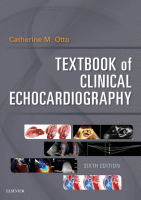Physical Address
304 North Cardinal St.
Dorchester Center, MA 02124

Basic Principles Approach to the Evaluation of Valvular Stenosis Narrowing, or stenosis, of a cardiac valve can be due to a congenitally abnormal valve, a postinflammatory process (e.g., rheumatic), or age-related calcification. As the degree of valve opening decreases, the…

Pericardial Anatomy and Physiology The pericardium consists of two serous surfaces surrounding a closed, complex, saclike potential space. The visceral pericardium is continuous with the epicardial surface of the heart. The parietal pericardium is a dense but thin fibrous structure…

Cardiomyopathy is defined as a primary disease of the myocardium, excluding myocardial dysfunction due to ischemia or chronic valvular disease. Several approaches to the classification of cardiomyopathies are possible, such as etiology or anatomy, but a physiologic classification is most…

Evaluation of patients with suspected or documented coronary artery disease is one of the most common indications for echocardiography. Evaluation typically focuses on functional changes due to coronary artery narrowing or occlusion—specifically systolic wall thickening and endocardial motion—rather than on…

Ventricular emptying and filling are complex interdependent processes, with the cardiac cycle conceptually divided into systole and diastole to allow clinical measurements of disease severity. Diastolic ventricular dysfunction plays a key role in the clinical manifestations of disease in patients…

The degree of ventricular systolic dysfunction is a potent predictor of clinical outcome for a wide range of cardiovascular disease, including ischemic cardiac disease, cardiomyopathies, valvular heart disease, and congenital heart disease. Echocardiographic estimates of global and regional function, quantitative…

Types of Echocardiographic Studies Cardiac ultrasound examinations now are performed in various practice settings by health care providers with differing types of clinical and imaging expertise. Diagnostic echocardiography is defined as an echocardiographic examination performed under the supervision of a…

All echocardiographic imaging depends on digital image processing. Ultrasound systems start with raw information (pixels) that are then used for two-dimensional (2D) or three-dimensional (3D) images using intensity, textures, and gradients to highlight edges and structures, thereby creating anatomic-type images…

Transesophageal echocardiography (TEE) offers the advantage of improved image quality compared with transthoracic echocardiographic images, particularly of posterior structures, such as the interatrial septum, mitral valve, left atrium (LA), and pulmonary veins. Image quality is improved both because of the…

Basic Imaging Principles Tomographic Imaging Echocardiography provides tomographic images of cardiac structures and blood flow, analogous to a thin “slice” through the heart. Two-dimensional (2D) echocardiographic images provide detailed anatomic data in a given image plane, but complete evaluation of…